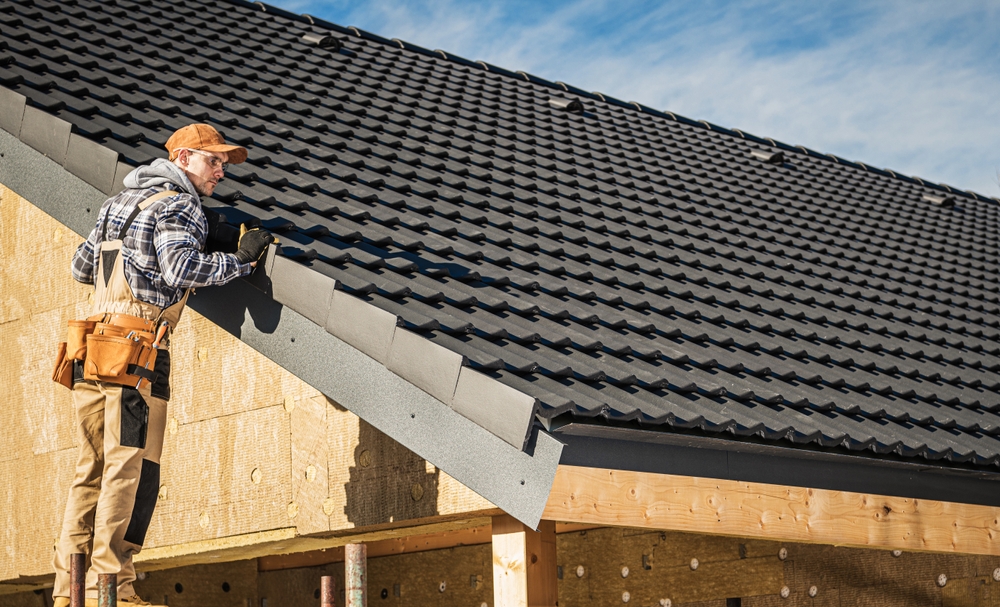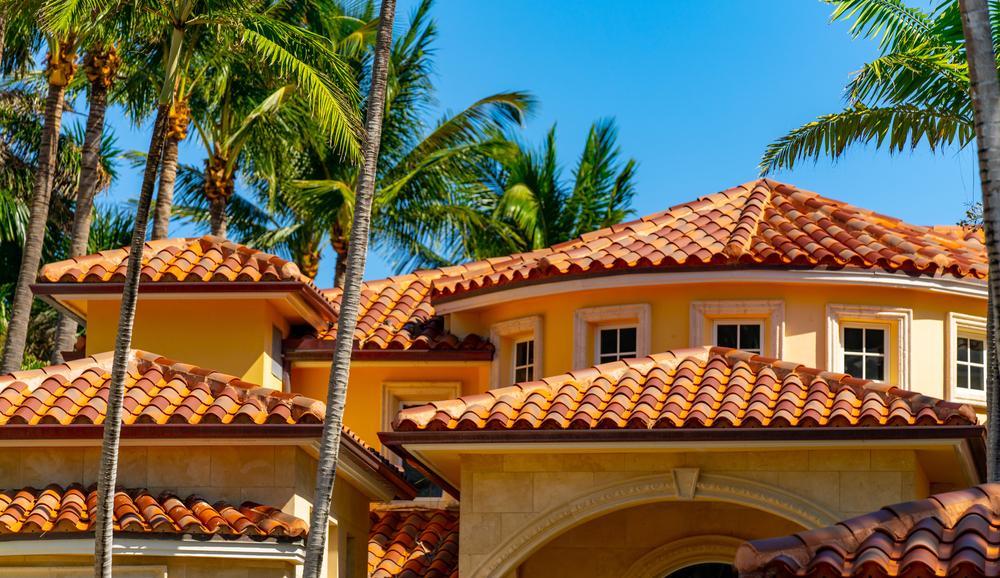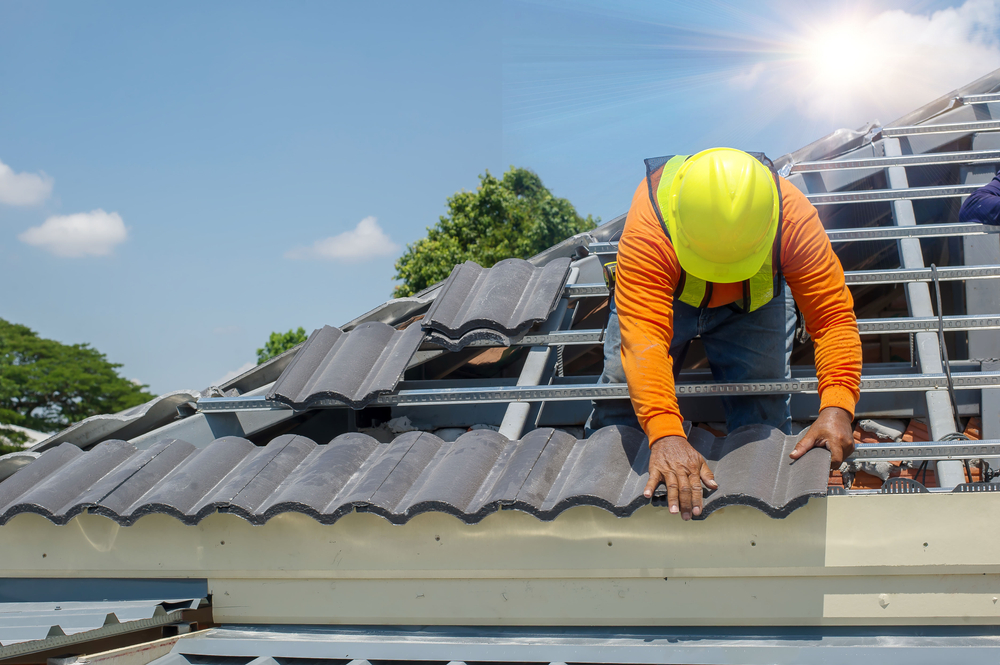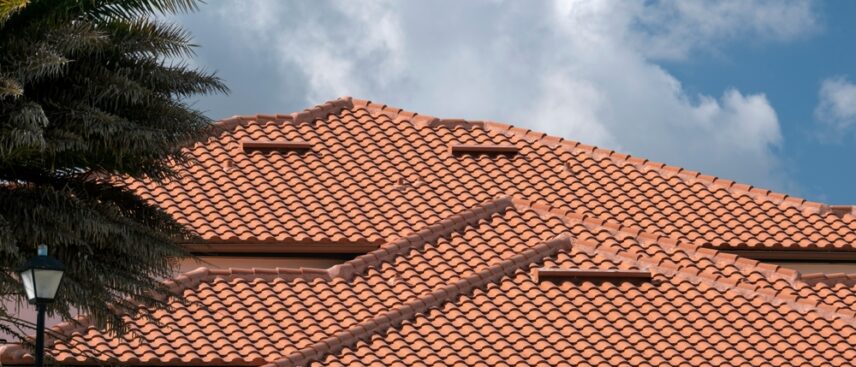When choosing roofing for your new home, it’s easy to assume that the newest materials are the best ones. However, turning to a classic and time-tested option like tile roofing adds unbeatable style to any structure. This kind of roofing has benefits over composite roofing that simply mimics the look. Genuine tile roofs work great in certain climates and on specific types of structures.
Types of Tile Commonly Used on Home Roofs
There are four main types of genuine tile roofing materials.
Clay Tile
Highly durable traditional clay tiles last longer lasting than asphalt shingle roofs. Depending on your climate and the tiles you choose, this kind of roofing can last 50 years or longer. These tiles offer a great balance between aesthetics and damage resistance. Thanks to modern advancements in manufacturing methods, you can find these tiles in a wide variety of styles and colors. Clay tile roofing is a good all-around choice if you like this look.
Concrete Tile
Concrete tile roofing won’t last as long as tiles made from clay or slate. However, they’re far more affordable than any other type of tile roofing. You may need to change the design of your home or reinforce your existing roof to handle the extra tile weight. They’re found in all the same colors and styles as other roofing tiles, but they tend to last longer in cold climates than other types of clay because they absorb less water.
Terracotta Tile
Historical buildings and homes in need of real panache look best with terracotta tile roofing. This type of clay was the first used for roofing tiles and offers unique textures and colors you can’t get from any other material. The softer clay absorbs a lot of water and doesn’t work as well in colder climates where winter freezing can crack or weaken the roofing. They generally need replacement, or at least intensive maintenance, every 20 to 30 years.
Slate Tile
Roofing cut from real slate provides a luxurious look you can’t completely replicate with other materials. It’s highly fire-resistant and works well in wet and colder climates due to its freeze resistance. With care, slate roofs can last for more than 50 years. They’re more expensive than other tile materials and can’t take the weight of a roofing crew or falling branches. But if you want the look of real stone, only slate roofing will do.
Advantages and Disadvantages of Tile Roofing

These tiles originated in areas with hot, dry climates that only experience occasional rainfall. While today’s roofing tiles are better sealed than the original terracotta materials found on ancient roofs, they’re still better suited for dry areas rather than rainy ones.
Benefits
In the right climate, these roofs offer several potential benefits:
- Fire resistance: This trait is shared equally by all of the tile materials.
- Longevity: The materials can last between 50 and 100 years.
- Damage resistance: Most tile roofing is highly damage and weather-resistant.
- Attractiveness: Nothing quite compares style-wise to real tiles.
- Pest resistance: Insects and animals can’t gnaw through these materials.
- Lack of maintenance: Aside from the occasional sealing or fastener replacement, clay tiles need little maintenance.
Drawbacks
These types of roofs may have some disadvantages:
- Heavy weight: Not all structures can support the weight of tile roofing.
- Complex installation: You’ll need installers who specialize in these particular materials.
- Limited access to the roof: Once the tiles are on the roof, it’s best not to step on them
- Higher cost: All tile materials cost more than other roofing options.
- Underlayment requirements: Since most tile roofing isn’t completely waterproof, you’ll need more underlayment to prevent roof leaks.
Choosing the Right Tile

You should consider a few factors when choosing a particular type of roof tile for your home.
Roof Structure
Some clay tiles are lighter than others. Clay and terracotta materials weigh only a fraction of what concrete and slate weigh. However, all tile roofing has enough weight to require some reinforcement of your existing structure. Changing the design of your new home before it’s built ensures you can install any roofing you want. It’s tricky to cover a lot of ridges and valleys with tile roofing, but a skilled installer can work in weaving patterns to keep everything covered in a decorative way.
Style of Your Home
Homes with certain exterior styles look better with tile roofing than others. The southwestern Adobe or Mission style practically demands some kind of terracotta-style roof. Many traditional home styles work well with concrete or slate roof tiles. Only you can decide if this kind of roofing has the look you want to complete your home’s exterior. Choosing from plenty of modern style options will also help you think outside the box.
Budget
Tile roofing materials cost around $7 to $45 per square foot, including installation costs. This can be twice as much as asphalt shingles or even more. You’ll need to really enjoy the appearance of a tiled roof to justify the higher cost.
Maintenance Requirements
This kind of roofing needs less maintenance than many other options, like wood shake shingles. However, the roof does need inspection and cleaning at least once every two years. You’ll need to let the professionals replace broken tiles as soon as possible after a storm so the roof stays waterproof. Some types of tiles also need the underlayment replaced after a few decades even if the tile lifespan still has years to go.
Tile Roof Installation

Preparing for the extra steps of slate or terracotta tile roofing installation ensures you’re not surprised by any stage of the process.
Importance of a Qualified Roofer
The heavier weight of the tiles means the installation team will need powered lifts and scaffolds to get the materials up to the roof without risking injury or damage. This installation process is complex enough that you’ll need a roofing company with experience with this particular material. It’s all too easy to break the tiles during installation or make mistakes when flashing the valleys that can cause a terracotta-style roof to leak.
Underlayment Considerations
In a dry climate, the tile roof may only need standard decking underneath the tiles. Wetter and colder climates call for the use of a waterproof underlayment that adheres to the decking to keep water from soaking through. This is because almost all tile roofing materials are slightly porous and can absorb water and release it later. Using a continuous layer of the right underlayment protects the structure and allows water to evaporate after a storm.
Ventilation Requirements
Venting your attic is recommended in most warmer climates to ensure you don’t get a lot of heat build-up over the day. You can’t use the usual ridge vents installed with asphalt and other shingle roofing materials. Specialty vents are required to encourage ventilation and keep your home cool in the height of summer. Ventilated underlayments may also play a role in your roofing system to deal with excess moisture so it can’t build up under the tiles.
Add Charm to Your Home with a Tile Roof
A tile roof can add charm to your home while providing decades of stress-free service. For a more modern look, consider these traditional materials or the updated concrete options.
